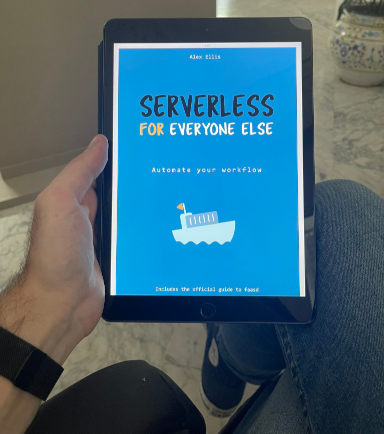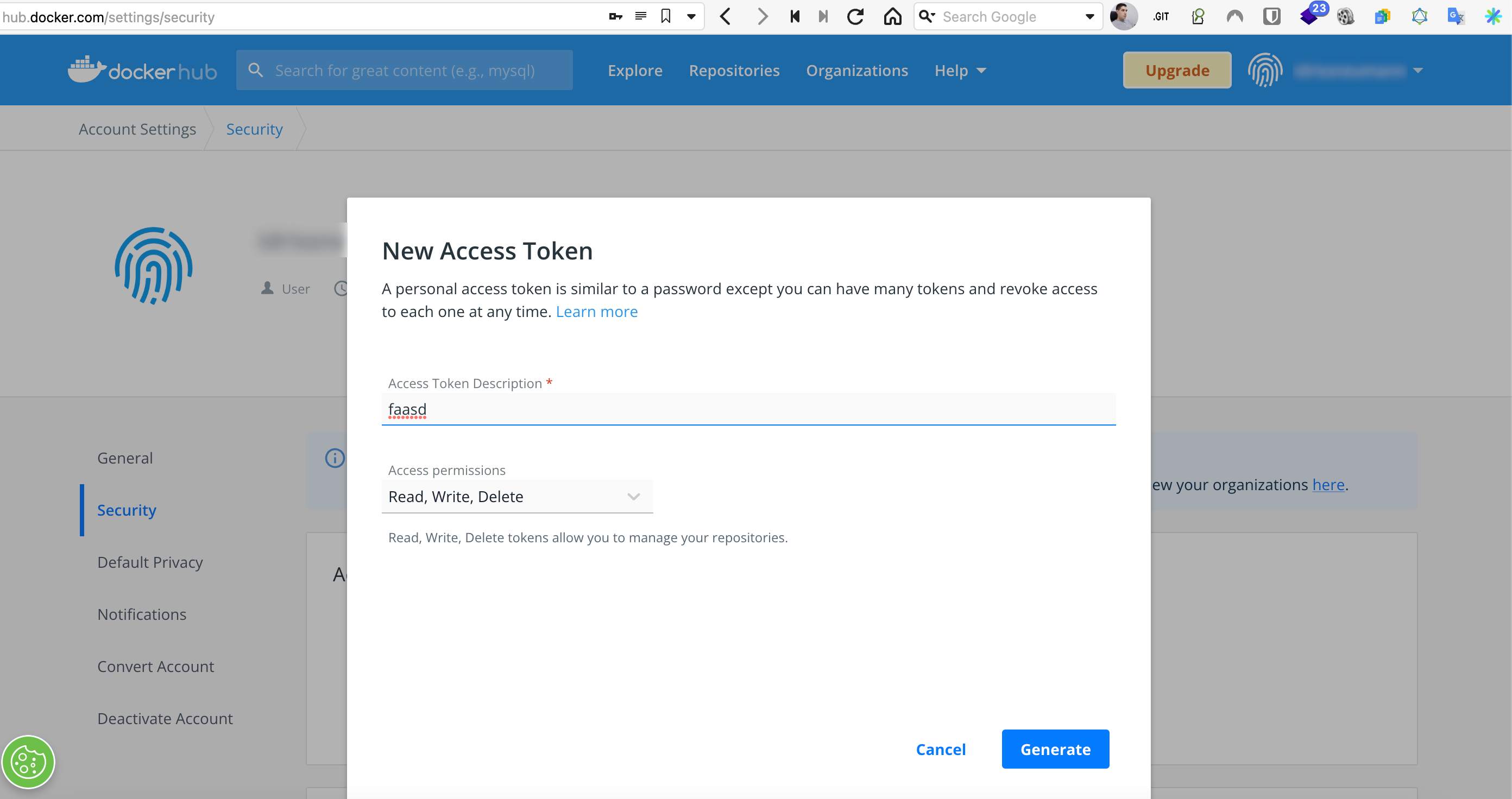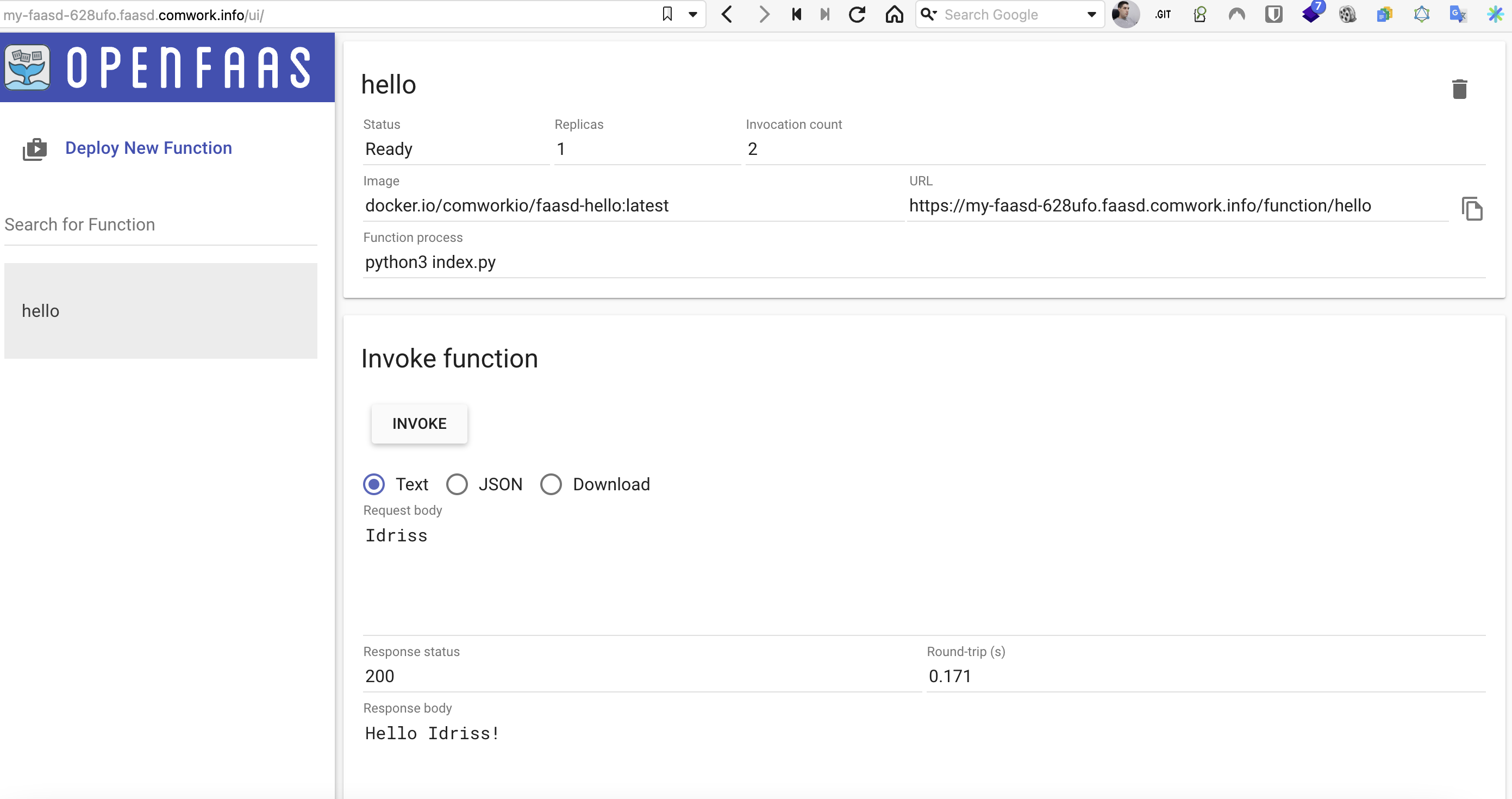OpenFaaS / Faasd
Translations
This tutorial is also available in the following languages:
Disclaimer
In this tutorial, we'll give you some insights on how to:
- deploy a faasd server with CwCloud
- deploy a dummy function in the context of using this cloud service
We do not want to replace the amazing job done by the OpenFaaS team. So if you want to really use Faasd in a production context, we strongly advise you to:
- Get the "Serverless for everyone else" book from Alex Ellis (founder of OpenFaaS and Faasd) which explain everything you need to know for using the OpenFaaS CLI (
faas-cli) and setting up a faasd server by yourself. It's not expensive and it's worth it, trust us! - Check the OpenFaaS CLI public documentation here which is also pretty great

You'll see it's very quick and very pleasant to read on any devices support
Video tutorial
You can activate the subtitles in English or French to get more details on this demo.
Enjoy!
The OpenFaaS CLI (faas-cli)
Let's assume in this tutorial you deployed a Faasd instance with the following public url: https://pmy-faasd-628ufo.faasd.comwork.info
Install and connect to the server
Install the faas-cli if it's not already done:
curl -sSL https://cli.openfaas.com | sudo sh
Authentication to the faasd server
export OPENFAAS_URL=https://my-faasd-628ufo.faasd.comwork.info # replace the public url with your own one
faas-cli login --username cloud --password YOUR_PASSWORD
You'll find the password in the ansible environment file (env/{ instance_hash }.yml):
faasd_user: cloud
faasd_password: YOUR_PASSWORD
Authentication to docker hub registry
In order to push your functions (which are built on top of containers), you need an OCI container registry such as docker hub.
Create a free account and an access token:


Then:
faas-cli registry-login --username YOUR_DOCKERHUB_USERNAME --password YOUR_DOCKERHUB_ACCESS_TOKEN
Note: you can use registries on Scaleway or OVH using CwCloud
Deploy a function with faas-cli
Here's an exemple of function created from template in Python3:
$ faas-cli new hello --lang python3
$ ls -l hello*
-rw------- 1 ineumann staff 157 Sep 3 10:05 hello.yml
hello:
total 4
-rw-r--r-- 1 ineumann staff 0 Sep 3 10:05 __init__.py
-rw-r--r-- 1 ineumann staff 123 Sep 3 10:05 handler.py
-rw-r--r-- 1 ineumann staff 0 Sep 3 10:05 requirements.txt
Change the hello/handler.py file:
def handle(req):
"""handle a request to the function
Args:
req (str): request body
"""
return "Hello {}!".format(req)
Change the hello.yml to add the image path and the faasd server URL in the image and gateway fields:
version: 1.0
provider:
name: openfaas
gateway: https://my-faasd-628ufo.faasd.comwork.info
functions:
hello:
lang: python3
handler: ./hello
image: comworkio/faasd-hello:latest
Then build and deploy:
$ faas-cli up -f ./hello.yml
If you're not on a x86/amd64 computer (like an Apple Silicon1 for example), use thoses commands instead:
$ faas-cli publish -f ./hello.yml --platforms linux/amd64
$ faas-cli deploy -f ./hello.yml
Then you'll be able to invoke your function:
$ curl -X POST "https://my-faasd-628ufo.faasd.comwork.info/function/hello" -d "Idriss"
Hello Idriss!
And see it and invoking it from the GUI:

- M1, M2... chips↩
